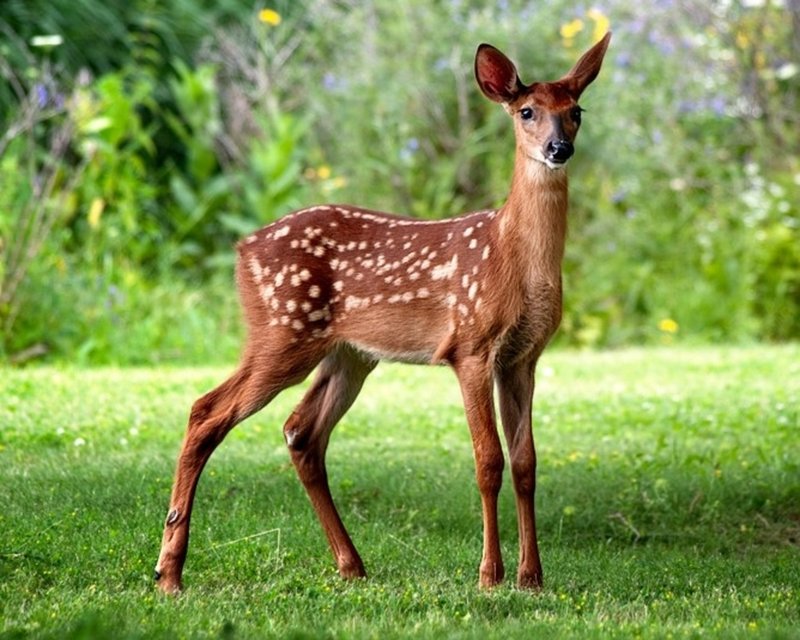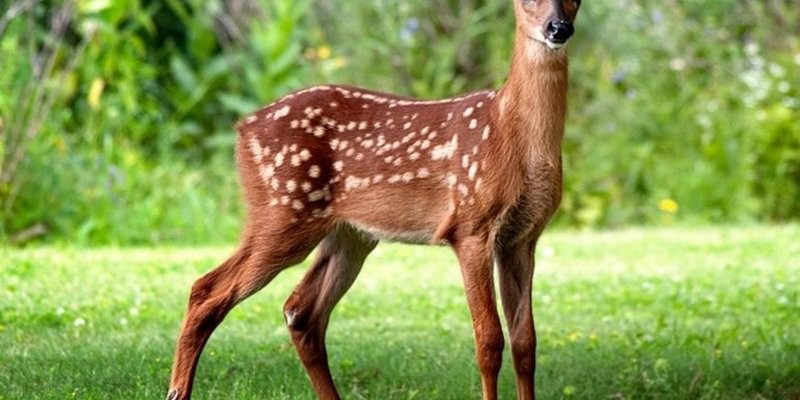
Identifying animals in the wild can feel a bit overwhelming, especially when they share common features. However, knowing what to look for, like size, coloration, and behaviors, can help you unravel the mystery. Let’s explore some fascinating animals that share similarities with the white-tailed deer, and I’ll help you distinguish them with ease.
1. Mule Deer
The mule deer is a close relative of the white-tailed deer, often found in the western United States. They get their name from their large, mule-like ears, which stand out prominently. Instead of the characteristic white tail, mule deer have a typical black tip at the end of their tails.
You might notice that mule deer have a more robust build compared to white-tailed deer. Their color ranges from a grayish-brown to a reddish hue, depending on the season. During the summer, they tend to be a lighter tan, while in winter, they can be quite dark. If you’re lucky enough to spot them, look for their unique bounding style—when they leap, their back legs come together, making it quite a spectacle!
2. Black-Tailed Deer
The black-tailed deer is another close cousin, primarily located in the Pacific Northwest. If you see a deer with a distinctly darker tail than the white-tailed deer, you might be looking at a black-tailed deer. These animals have a compact body and are often found in coastal environments.
One of the most notable differences is their smaller size and darker fur. Their tails are a rich chocolate brown and frequently stand out against their lighter body. Black-tailed deer are known for their adaptability to urban areas, making them a common sight in parks and residential neighborhoods. Keep your eyes peeled for their characteristic “black-tipped” tail next time you’re near the shore!
3. Fallow Deer
If you’re interested in some flair, the fallow deer might catch your attention. Originating from Europe and introduced in other parts of the world, these deer are often recognized for their unique spotted coats, which can range from white to dark brown. Unlike the white-tailed deer, fallow deer have a more rounded body and a distinctive, flattened antler shape.
In terms of behavior, fallow deer are incredibly social. You’ll often find them in groups called “herds.” They also have a unique method of communicating using a series of grunts and barks. If you spot a herd grazing, look for the males to see if they have antlers that ‘palm’ out, which is a key feature of this species.
4. Red Deer
Next on the list is the impressive red deer, one of the largest deer species in the world. Predominantly found in Europe and parts of Asia, red deer have a reddish-brown coat and a very robust body. Their antlers can grow quite large, making them stand out even more.
Unlike the white-tailed deer, red deer are known for their loud roars during mating season—a stark contrast to the quieter white-tailed deer. Their size and vocalizations are excellent indicators of their species. So, if you find yourself in the woods during autumn, listen closely; those bugling calls might just be a sign of red deer nearby.
5. Axis Deer
The axis deer, also known as the chital, is a grazer that’s often spotted in various parts of India and Sri Lanka. They have a striking appearance with a reddish-brown coat covered in white spots. One major difference from the white-tailed deer is their even more pronounced spots, which make them visually stunning among the forest foliage.
Axis deer are social animals that often form large groups. Their behavior leans towards alertness; they have excellent vision and hearing, which helps them evade predators. If you see a herd of deer with a spotted coat, it’s likely you’re looking at axis deer rather than white-tails, even from a distance.
6. Sika Deer
Originating from East Asia, the sika deer is another fascinating animal that resembles the white-tailed deer. Sika deer can be quite variable in color, from light brown to a deep, dark hue, often with small white spots. They have a unique “barking” call that sets them apart from other deer.
When you observe these deer, notice their smaller size and stockier build. They also exhibit a distinctive puffing behavior when challenged or alarmed. If you happen to see a deer that flicks its tail nervously, it could be a sika deer putting on a show!
7. Roe Deer
Common in Europe and parts of Asia, the roe deer is a small deer species that sometimes gets confused with the white-tailed deer. One immediate difference is their smaller size and graceful stature. They also have a unique appearance with a more compact body and less prominent antlers.
Roe deer are known for their agility and speed, which they rely on to escape predators. They tend to be solitary animals, unlike the more social white-tailed deer. If you’re out in the fields of Europe and see a smaller deer with a reddish coat, it might just be a roe deer blending into the environment.
8. Kangaroo
While not a deer, you might be surprised to learn that kangaroos have similarly graceful movements. Found in Australia, kangaroos are much larger than deer but share some similarities in terms of bounding and grazing habits.
Kangaroos are unique with their powerful hind legs and large tails that help them maintain balance. They also have a sociable nature, often seen in groups known as “mobs.” If you find yourself in Australia, a leap of a kangaroo might remind you of the white-tailed deer’s elegant hops.
9. Pronghorn Antelope
The pronghorn antelope is one of the fastest land mammals in North America, and while it’s not a deer, it shares a similar habitat. Known for their incredible speed and endurance, pronghorns have a unique feature—two pronged horns on males, which sets them apart from deer.
Pronghorns have a light, tan-colored body with white markings. Their speed is a crucial survival trait, used to escape predators. When out hiking, if you spot a quick flash of tan racing away from you, it’s likely a pronghorn antelope, rather than a white-tailed deer.
10. Bongo
Last but not least, let’s talk about the stunning bongo, an animal you might not expect to find in the same conversation as deer. Native to the African jungles, bongos have a beautiful orange-brown coat with white stripes, making them visually similar to deer, but much larger in size.
Unlike the white-tailed deer, which is more commonly found in open spaces, bongos prefer dense forests, allowing them to camouflage in their habitat. If you ever get the chance to see a bongo in a zoo or wildlife park, their striking appearance and large spiraled horns will surely catch your eye.
Identifying animals similar to the white-tailed deer can be both exciting and educational. Whether you’re on a hike or just enjoying nature from your backyard, knowing the differences can enhance your wildlife watching experience. Remember, every deer and deer-like creature we explored today has its unique traits that make them special.
So next time you’re out, take a moment to look closely. Is that a graceful leap of a white-tailed deer, or one of its look-alikes? With a bit of practice, you’ll be a wildlife identification pro in no time! Keep exploring and appreciating the wonders of nature around you.

